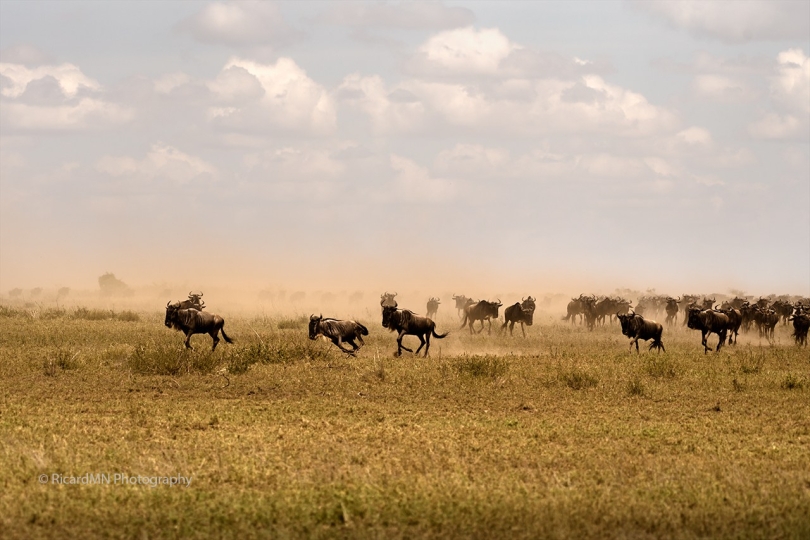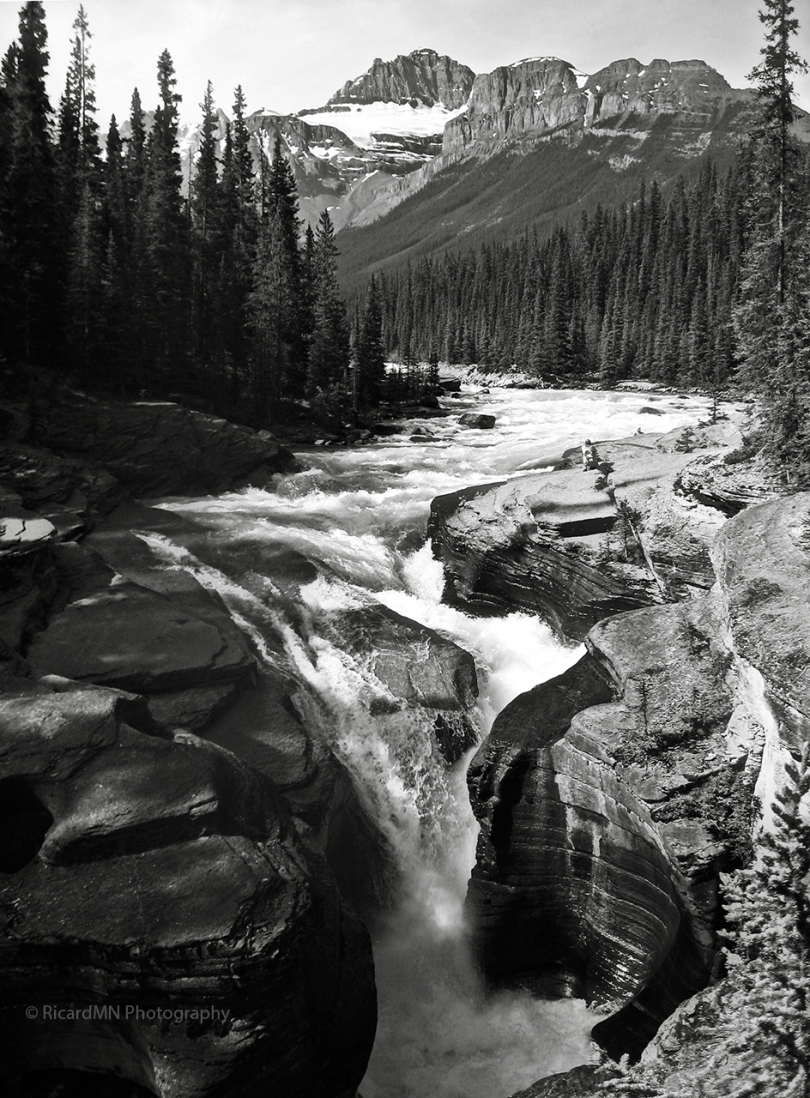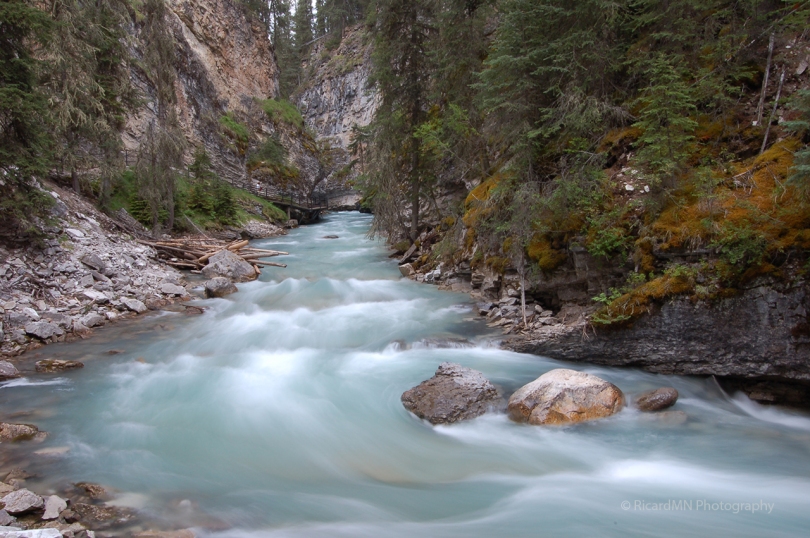
© RicardMN Photography
Blue wildebeest during the Great Migration in Serengeti National Park, Tanzania.
The wildebeests, also called gnus, are a genus of antelopes, scientific name Connochaetes. They belong to the family Bovidae, which includes antelopes, cattle, goats, sheep and other even-toed horned ungulates. Connochaetes includes two species, both native to Africa: the black wildebeest, or white-tailed gnu (C. gnou); and the blue wildebeest, or brindled gnu (C. taurinus).
Blue wildebeest have both migratory and sedentary populations. In the Ngorongoro most animals are sedentary and males maintain a network of territories throughout the year, even though breeding is seasonal in nature. Females and young form groups of about ten individuals or join together in larger aggregations, and non-territorial males form bachelor groups. In the Serengeti and Tarangire ecosystems, populations are mostly migratory, with herds consisting of both sexes frequently moving, but resident subpopulations also exist. During the rutting season, the males may form temporary territories for a few hours or a day or so, and attempt to gather together a few females with which to mate, but soon they have to move on, often moving ahead to set up another temporary territory.
Each year, some East African populations of blue wildebeest have a long-distance migration, seemingly timed to coincide with the annual pattern of rainfall and grass growth. The timing of their migrations in both the rainy and dry seasons can vary considerably (by months) from year to year. At the end of the wet season (May or June in East Africa), wildebeest migrate to dry-season areas in response to a lack of surface (drinking) water. When the rainy season begins again (months later), animals quickly move back to their wet-season ranges. Factors suspected to affect migration include food abundance, surface water availability, predators, and phosphorus content in grasses. Phosphorus is a crucial element for all life forms, particularly for lactating female bovids. As a result, during the rainy season, wildebeest select grazing areas that contain particularly high phosphorus levels. One study found, in addition to phosphorus, wildebeest select ranges containing grass with relatively high nitrogen content.
Aerial photography has revealed that there is a level of organisation in the movement of the herd that cannot be apparent to each individual animal; for example, the migratory herd exhibits a wavy front, and this suggests that there is some degree of local decision-making taking place. Numerous documentaries feature wildebeest crossing rivers, with many being eaten by crocodiles or drowning in the attempt. While having the appearance of a frenzy, recent research has shown a herd of wildebeest possesses what is known as a “swarm intelligence”, whereby the animals systematically explore and overcome the obstacle as one. Major predators that feed on wildebeest include the lion, hyena, cheetah, leopard, and crocodile, which seem to favour the wildebeest over other prey. Wildebeest, however, are very strong, and can inflict considerable injury even to a lion. Wildebeest have a maximum running speed of around 80 km/h (50 mph). The primary defensive tactic is herding, where the young animals are protected by the older, larger ones, while the herd runs as a group. Typically, the predators attempt to cut out a young or ill animal and attack without having to worry about the herd. Wildebeest have developed additional sophisticated cooperative behaviours, such as animals taking turns sleeping while others stand guard against a night attack by invading predators. Wildebeest migrations are closely followed by vultures, as wildebeest carcasses are an important source of food for these scavengers. The vultures consume about 70% of the wildebeest carcasses available. Decreases in the number of migrating wildebeest have also had a negative effect on the vultures. In the Serengeti ecosystem, Tanzania, wildebeest may help facilitate the migration of other, smaller-bodied grazers, such as Thomson’s gazelles (Eudorcas thomsonii), which eat the new-growth grasses stimulated by wildebeest foraging. (Descrition from Wikipedia).
Canvas, framed, acrylic and metal prints / Art prints / Greeting cards / Phone cases / Throw pillows
RicardMN Photograpy’s Facebook Page – RicardMN Photography’s Pinterest





